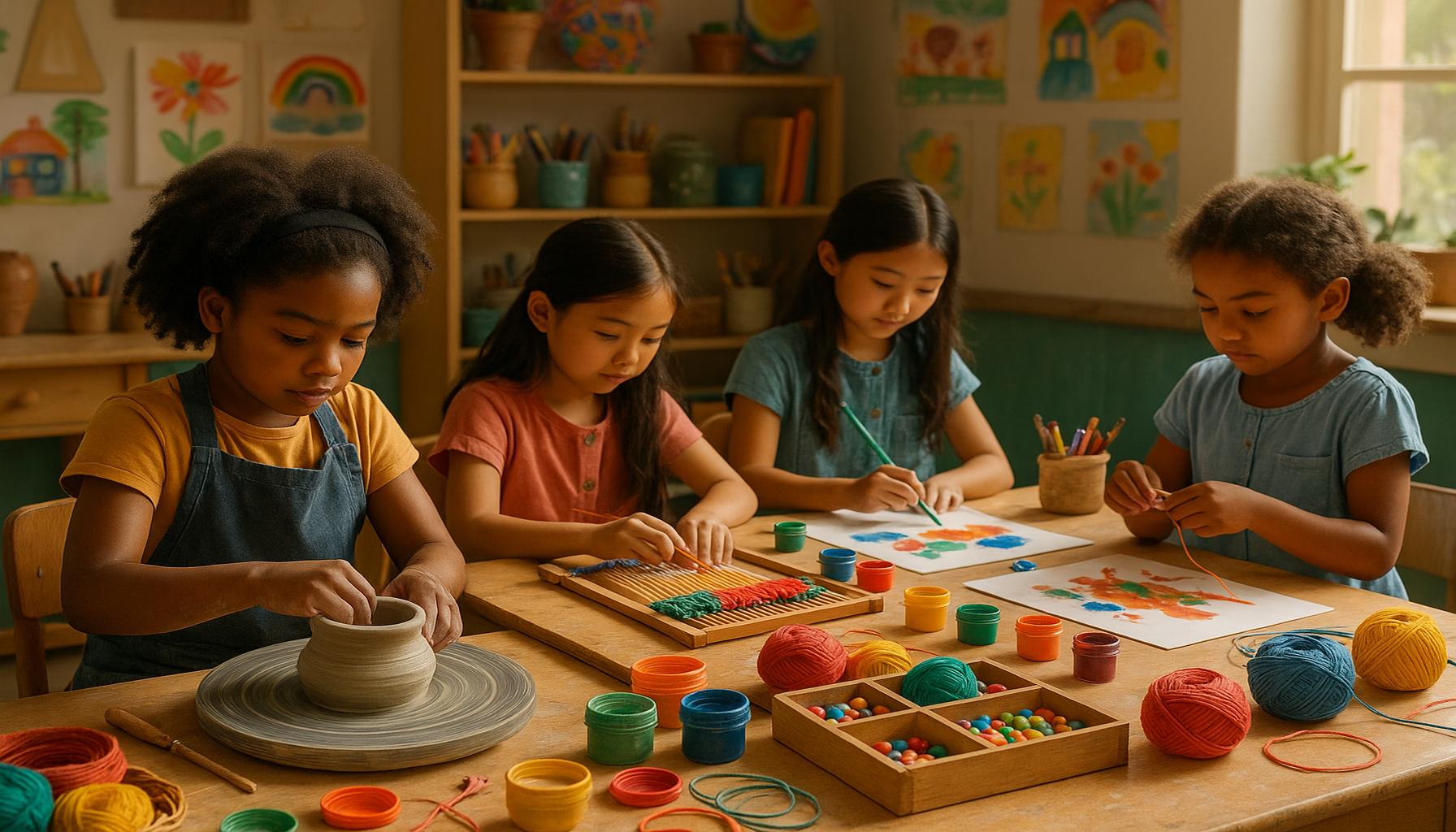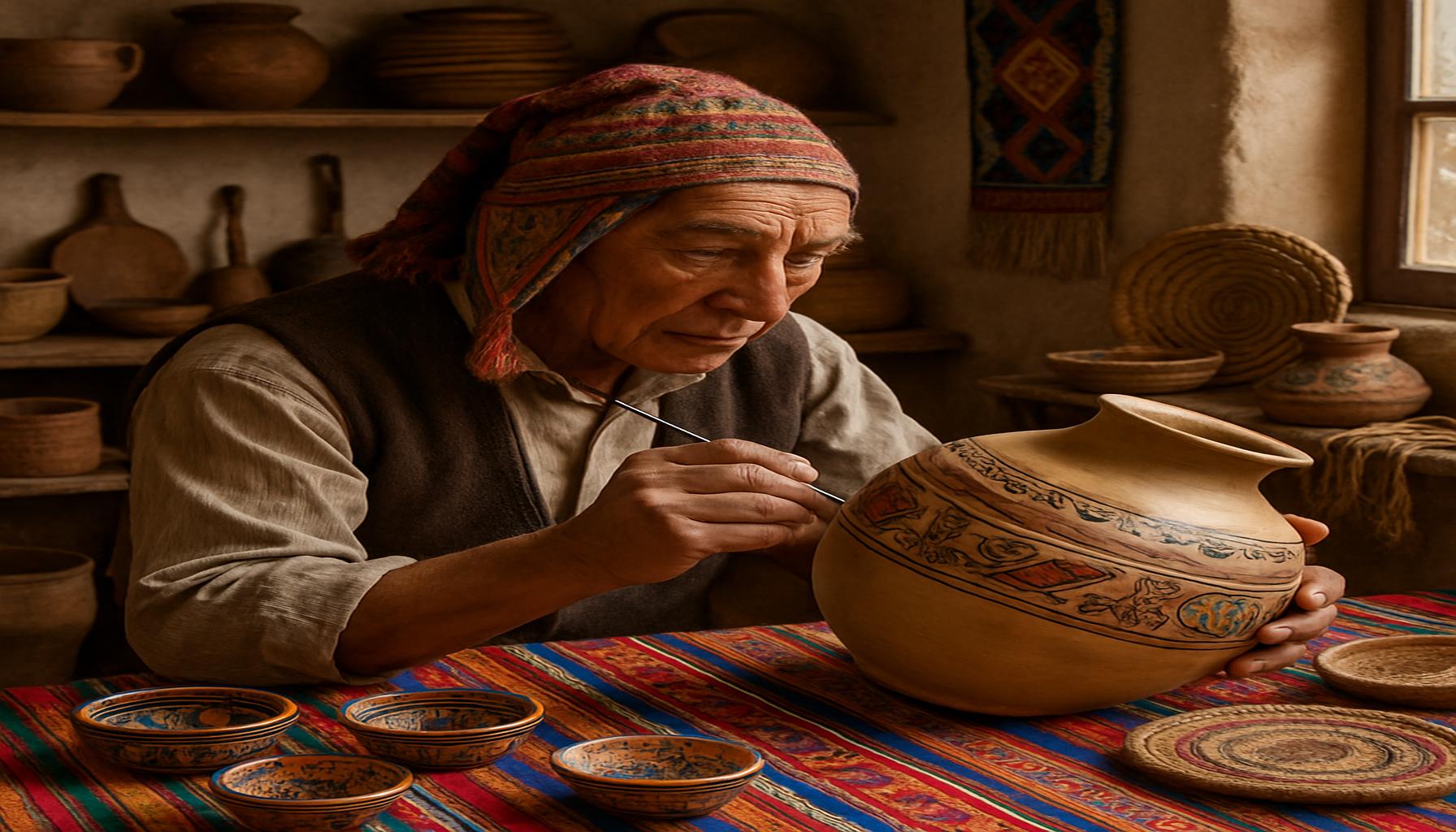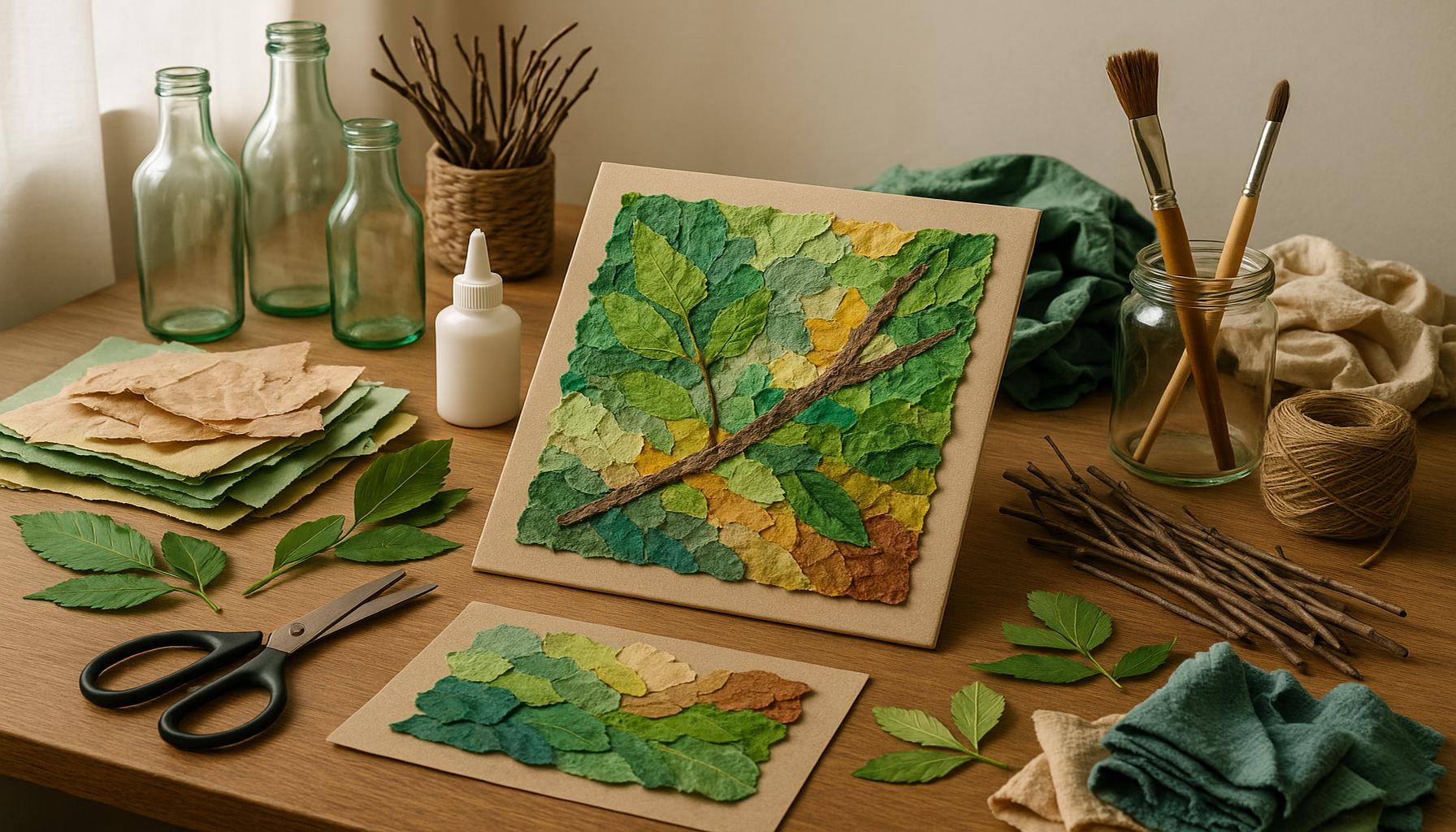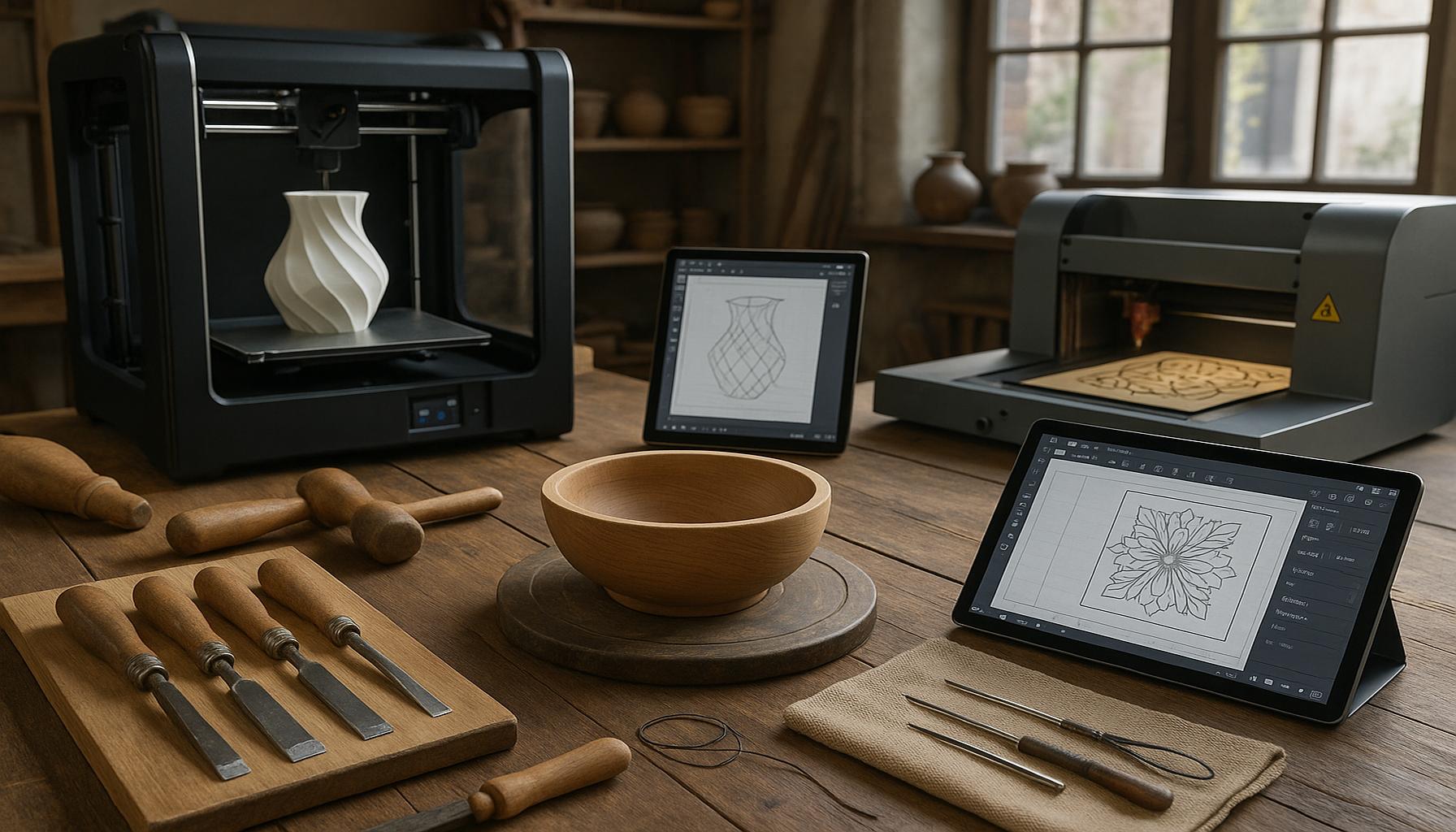The role of handicrafts in education: How manual activities can promote essential skills in children

The Role of Handicrafts in Educational Development
Handicrafts have gained recognition as a pivotal component of learning, providing students with opportunities to blend creativity with practical skills. These manual activities not only foster a sense of accomplishment but also promote essential skills that pave the way for holistic development. The inclusion of handicrafts in education goes beyond mere artistic expression; it catalyzes various forms of growth in children.
Delving into the multifaceted benefits of handicrafts reveals their profound impact on education:
- Cognitive Development: Engaging in activities such as sewing, woodworking, or pottery encourages problem-solving and critical thinking. For instance, as children stitch a pattern or construct a wooden model, they must plan their steps, troubleshoot issues, and adapt to unforeseen challenges. These processes help them develop a growth mindset and enhance their ability to approach tasks methodically.
- Fine Motor Skills: Crafting activities are excellent for strengthening hand-eye coordination and dexterity. Simple tasks, like cutting paper or threading beads, enhance the fine motor skills necessary for later academic tasks such as writing or using technology effectively. According to studies, children involved in arts and crafts show significant progress in their overall motor abilities compared to their peers who do not engage in such activities.
- Emotional Intelligence: Working on tactile projects fosters patience, resilience, and self-expression. When children face setbacks in their crafting endeavors, they learn to persevere. Moreover, the freedom to express themselves through art allows them to manage emotions and communicate feelings, an essential aspect of emotional intelligence.
In the United States, numerous schools and educational programs are increasingly implementing hands-on learning strategies that emphasize practical engagement. For example, initiatives like the Maker Movement encourage students to explore their creativity through projects that meld engineering with art. Such projects not only bolster creativity but also equip students with skills crucial for future careers in a rapidly evolving world.
Parents and educators can significantly enhance a child’s educational experience by recognizing the value of manual activities. The integration of handicrafts into learning environments can transform conventional methods of teaching, leading to enriched educational outcomes. By exploring how these activities contribute to cognitive, physical, and emotional development, we not only reshape the learning experience but also equip children for real-world challenges and opportunities. This holistic approach to education prepares students not merely to excel in academics but to thrive as innovative and adaptable individuals in society.
DIVE DEEPER: Click here to discover innovative painting techniques
Fostering Creativity and Critical Thinking through Handicrafts
Handicrafts serve as a delightful gateway into the world of creativity and critical thinking, both essential components of a well-rounded education. When children engage in hands-on activities, they are not just creating physical objects; they are also exercising their minds in innovative ways. The process of making something from scratch encourages an exploration of ideas and allows children to experience the satisfaction of problem-solving in real-time.
For instance, consider a classroom project where students are tasked with creating a birdhouse. This simple project can promote a variety of skills:
- Planning and Organization: Children must first design their birdhouses, considering dimensions, materials, and purpose. This encourages them to conceptualize their ideas and organize steps efficiently.
- Math Skills: As they measure wood and calculate angles, they are inadvertently applying mathematical concepts in a practical context, which often enhances retention and understanding.
- Science Exploration: Discussing which types of materials work best for insulation or how to attract certain bird species introduces basic ecological science.
By merging art with other subjects such as math and science, handicrafts become an integrative tool that breaks down traditional educational silos. Moreover, through this process, children are given the freedom to make decisions, face challenges, and adapt their designs — all vital skills in today’s ever-changing world.
The psychological impact of crafting is equally noteworthy. The tactile experience of working with one’s hands fosters a deep sense of engagement and satisfaction, which can be vital for maintaining a child’s interest in learning. Engaging with real materials as opposed to digital simulations can enhance concentration and thoroughness, allowing children to produce work they can be proud of. This hands-on involvement has also been shown to boost self-esteem, as young learners realize that their creative output holds value.
Additionally, the social dynamics inherent in group crafting projects provide opportunities to develop teamwork and communication skills. Working collaboratively on a handicraft endeavor encourages children to share ideas, resolve conflicts, and appreciate diverse perspectives, which are all important for holistic social development.
As we shift towards more inclusive and diverse educational approaches in the United States, recognizing the importance of handicrafts within the curriculum is essential. Numerous programs across the country are being introduced to promote makerspaces and community workshops that allow children to engage in varied manual activities, further highlighting the potential of handicrafts in educational settings.
In summary, the role of handicrafts in education extends far beyond the art room. By providing children with a platform to practice creativity, critical thinking, and collaboration, we are equipping them with the tools they need to navigate an increasingly complex world, preparing them not only for academic success but also for their future roles as innovative and versatile contributors to society.
| Skill Development | Example Activities |
|---|---|
| Critical Thinking | Engaging in projects that require planning, such as building models. |
| Creativity | Creating unique crafts from recycled materials fosters innovation. |
| Teamwork | Working on group projects enhances collaboration and communication skills. |
| Fine Motor Skills | Activities like sewing and sculpting improve dexterity and hand coordination. |
Handicrafts serve as a powerful tool for skill development in children through hands-on learning experiences. Engaging in various manual activities not only encourages creativity but also promotes critical thinking and problem-solving abilities among young learners. For instance, working on projects that require careful planning, such as building models, ignites their critical thinking faculties. Furthermore, the practice of repurposing materials into unique crafts nurtures their creativity by allowing them to express their ideas and emotions. Equally important is the aspect of teamwork. Group projects, where children collaborate to create something tangible, can significantly enhance their communication and interpersonal skills. Finally, the development of fine motor skills through intricate activities like sewing or sculpting equips children with useful abilities that lay the foundation for future learning. Thus, integrating handicrafts into educational curricula can massively benefit child development, making them vital in any modern educational framework.
DISCOVER MORE: Click here to learn about the therapeutic benefits of writing
Enhancing Fine Motor Skills and Spatial Awareness through Crafting
In addition to fostering creativity and critical thinking, handicrafts play a pivotal role in developing fine motor skills and spatial awareness in children. These physical abilities are essential not only for crafting but also for everyday tasks like writing, typing, and playing sports. Engaging in manual activities, such as sewing, sculpting, or woodworking, helps children refine their dexterity and improve hand-eye coordination.
For example, consider the activity of making friendship bracelets with beads. Children must thread tiny beads onto string, a task that demands precision and control. This hands-on experience strengthens finger muscles and enhances grip, which are vital components of fine motor skill development. Furthermore, this activity also introduces foundational concepts in geometry as children learn to create patterns, shapes, and color combinations, thereby boosting their ability to recognize and manipulate spatial relationships.
Moreover, crafting activities often require focused attention on minute details, which encourages children to practice patience and persistence. When they encounter challenges—like a broken piece or an unintended color clash—they learn to approach problems with creativity and resilience. These experiences cultivate a growth mindset, vital for lifelong learning.
In the context of education, the integration of handicrafts into the curriculum can yield significant benefits. A recent study published in the Journal of Occupational Therapy showed that children who participated in artistic and manual activities exhibited marked improvement in both fine motor skills and academic performance. Schools that have embraced art and craft-focused programs often report higher levels of student engagement and satisfaction, indicating that children thrive in environments where creative expression is permitted and encouraged.
Besides individual advancement, participating in crafting activities also enhances social skills among children. Group projects encourage communication, negotiation, and decision-making. For instance, working together to create a large mural or a community art installation fosters a sense of belonging and teamwork. This collaborative aspect of handicrafts imparts a key lesson: the ability to work well with others is just as crucial as one’s individual accomplishments.
With the rise of technology in education, the challenge has been to balance digital learning with hands-on experiences. Reinforcing the importance of skilled craftsmanship today can help mitigate the risks associated with our increasingly screen-focused society. Programs such as STEAM (Science, Technology, Engineering, Arts, and Mathematics) education aim to bridge this gap by incorporating arts into the sciences. Schools participating in these programs are observing that children return to the intrinsic joy of making while enhancing their STEAM skills, providing a richer, more holistic educational experience.
As educators and parents, valuing intricacies in handicrafts offers young learners not just the ability to create but the confidence to express themselves comprehensively. It equips them with the skills necessary to engage in a professional landscape that increasingly values creativity and adaptability, solidifying the significance of manual activities in educational methodologies.
DISCOVER MORE: Click here to learn about sustainable crafting
Conclusion: The Lasting Impact of Handicrafts in Education
The significance of handicrafts in education extends far beyond mere artistic expression; it encompasses a broad spectrum of essential skills that young learners desperately need in today’s diverse and fast-paced world. As highlighted in this exploration, engaging in manual activities not only sharpens fine motor skills and spatial awareness but also promotes creativity, problem-solving, and social interaction. These skills are foundational, influencing not just academic performance but also equipping children with the confidence to collaborate and communicate effectively in group settings.
With the growing emphasis on digital literacy, it’s crucial that we do not overlook the value of hands-on experiences. By integrating handicrafts into educational curricula—such as through STEAM programs—schools can cultivate environments where creativity and technical skills coexist harmoniously. Research supports this approach, demonstrating that children engaged in craft-focused learning often exhibit higher levels of engagement and satisfaction, which, in turn, benefits their overall academic journey.
As educators, parents, and communities, placing a greater emphasis on the role of handicrafts can yield transformative outcomes for future generations. The blend of creativity, critical thinking, and practical abilities prepares children not only for the challenges of academia but also for innovative careers. Ultimately, investing in manual activities today promises a brighter, more adaptable generation tomorrow—one ready to embrace the complexities of the world with both craftsmanship and creativity.


